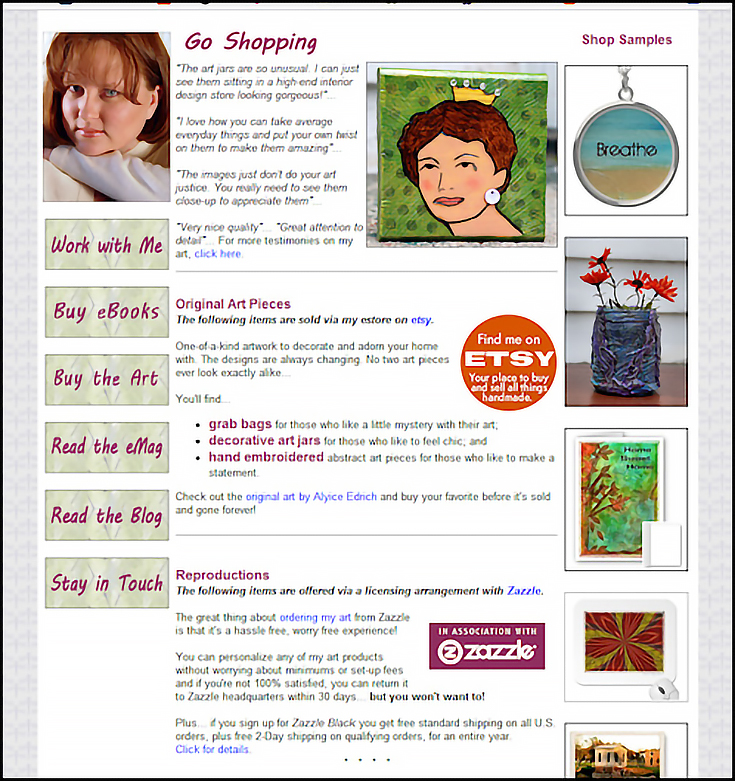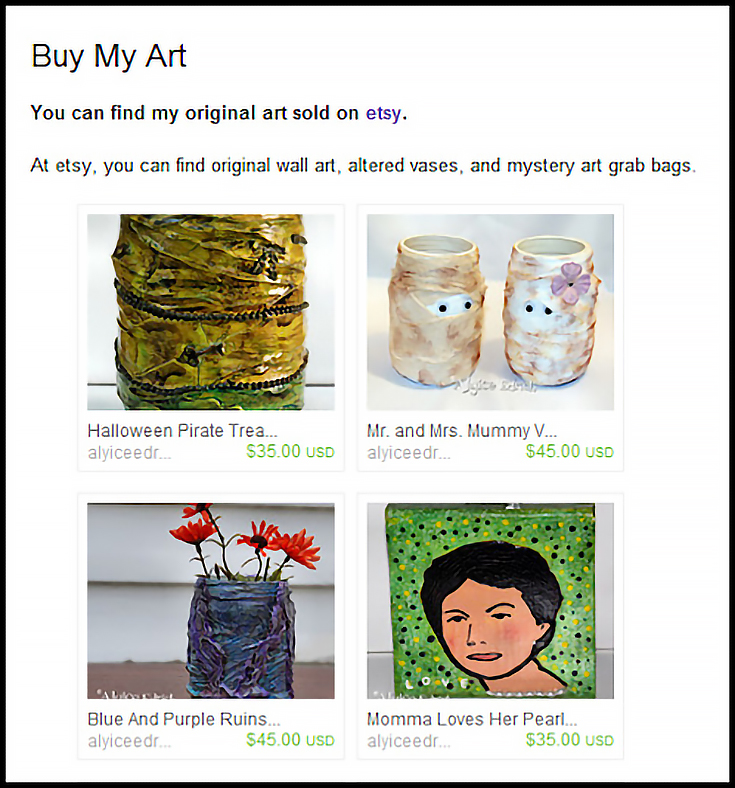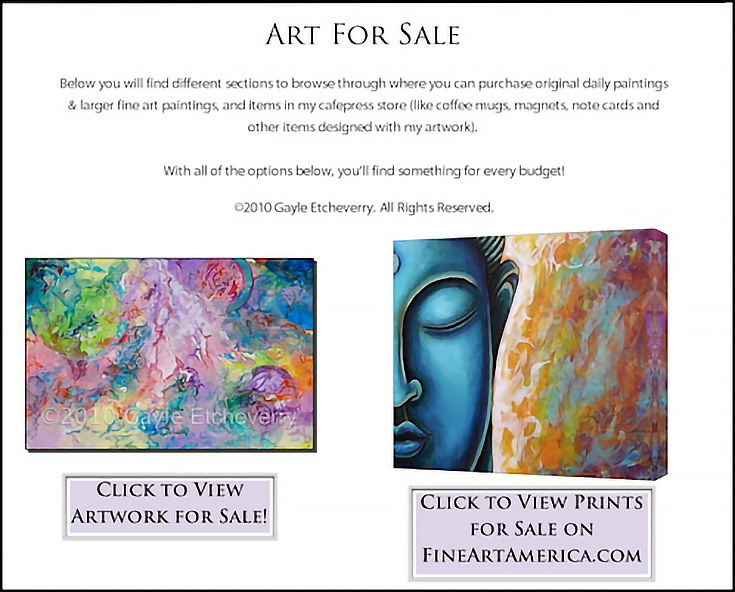Do you sell your art in various places on the internet and find it difficult to keep track of all those URLs, or point potential clients in the right direction?
If so, you can put an end to all the confusion by creating a single page on your art blog (or art website), known as a “sales hub page” with all the information your potential buyers will need.
By creating a hub for all your art sales venues, you make it easier for new clients to discover your art, for previous clients to find art that matches past purchases, and for media personnel to get a better feel for your art.
Even more importantly, creating a sales hub page allows you to build a customer base that associates your art with your art blog (or art website) and not the company selling your art.
When creating a sales hub page, keep these four points in mind:
1. Match your art blog’s format
If the words you share on your art blog are often written to make people laugh, add a little bit of that humor on your sales hub page. And if the words you share on your art blog are casual, or formal, then introduce your art venues in the same manner.
2. Give potential art buyers specific direction
Use your sales hub page to guide your buyers to the right area of interest by telling your buyers what type of art they can find at each venue.
For instance, if you only sell prints of your art at Imagekind.com, make it clear that your art buyers can find low-cost reproductions of your original art at Imagekind.com.
If, however, you sell small, original oil paintings on etsy.com, and larger, more time consuming and expensive oil paintings in galleries, make it clear where your buyers can find each type of art.
3. Be clear and direct
This is not the place to share your artist’s statement, or discuss the meaning behind your latest series of art. This is the place to persuade your buyer to take action and visit your online store. Once at your store, it’s up to the sales copy to convince the buyer to buy.
4. Include images
Pictures entice buyers and give them a reason to click on over to an art sales venue so take the time to include a couple of high quality photos of your art on your sales hub page.
Of course, if you aren’t ready to invest a lot of time in your sales hub page just yet, or you want to get something up quick while you’re working on stronger sales copy, consider writing up a brief introduction about your art sales venue then follow it up with the company’s sales widget and an active link.
Like this:
Or do as artist, Gayle Etcheverry did by writing up a quick introduction then immediately directing her buyers to the various art venues selling her art. Notice how a single, large image of her art entices potential buyers?
No matter how you choose to put your sales hub page together, make sure you keep it simple, give clear instructions on where to click to get to your art venues, and always include a few images of your art.
This post may contain affiliate links.



